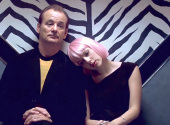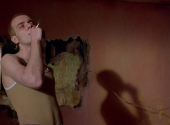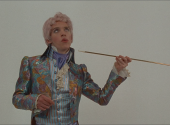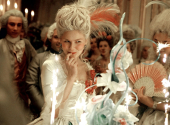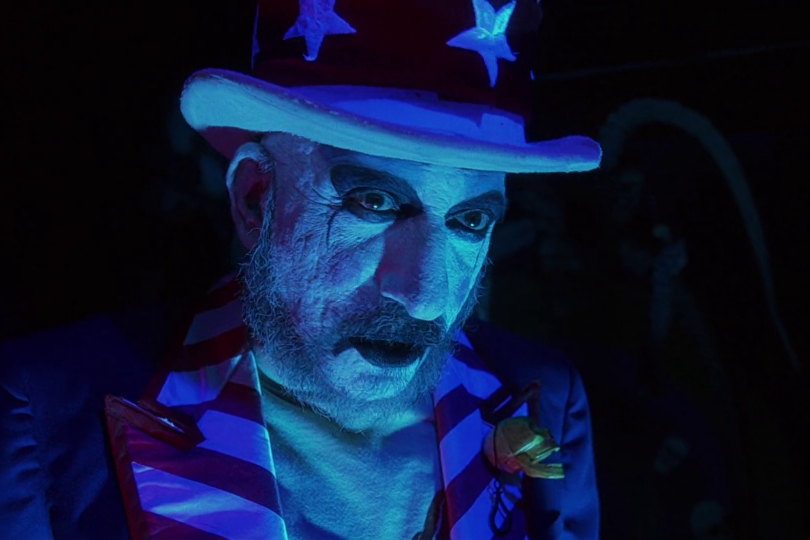
The Soundtracks of Our Lives #9: House of 1000 Corpses, Spooky Tunes
We often talk about the visual spectacle of horror movies: the gruesome special effects, the shadowy cinematography and the terrifying monster designs. But there is another crucial element lurking beneath the surface of every successful scare: the soundtrack. They are the secret weapons that can transform a moderately spooky scene into a heart-pounding nightmare. A well-crafted soundtrack can make or break a scary movie, setting the tone and increasing the tension for viewers. The eerie music, sudden sound jolts and creepy whispers create an atmosphere of fear and dread that keeps audiences on the edge of their seats. And one that left its mark among the other films of the genre is Rob Zombie's debut, House of 1000 Corpses.
Initially known as the frontman of the heavy metal band White Zombie, Rob had always been fascinated with the macabre and horror genre. He eventually shifted his creative focus to filmmaking, drawing on his musical background to infuse his movies with an edgy aesthetic. Despite facing numerous obstacles and rejections in Hollywood due to the graphic nature of his storytelling, Rob stayed true to his vision. Eventually, he found success when Lionsgate Films took a chance on him.
Initially thought to be released in 2000, eventually his debut movie only saw the light in 2003. And it immediately became a cult classic. House of 1000 Corpses is not just a horror film: it's a sensory assault. A chaotic, blood-soaked carnival ride through the heart of Americana's darkest corners. And integral to this experience is its soundtrack – a Frankensteinian monster of genre-bending tracks, carefully selected and designed to amplify the film's grotesque beauty and visceral terror.
This isn't your typical horror score; it's a curated playlist of sonic madness, a twisted dance of rock, psychedelia and unsettling soundscapes that perfectly complements the film's manic energy. From the opening credits to the final, unsettling shot, music is a character in House of 1000 Corpses, driving the narrative and amplifying the film's already over-the-top atmosphere.
When Bill, Jerry, Denise and Mary first arrive at Captain Spaulding's Museum of Monsters and Madmen, they are greeted by the kitschy upbeat vibe of the Commodores' "Brick House". This seemingly incongruous choice immediately sets a tone of unsettling juxtaposition. The cheerful funkiness of the music masks the undercurrent of menace, a feeling of unease that something is deeply wrong.
It's a deceptive welcome, a sonic lure that draws the unsuspecting victims deeper into the depraved world that awaits. And a fun fact: Zombie's manager was able to put Trina and Lionel Ritchie (co-lead singer of the Commodores in the late 70s and early 80s) on a cover of the song together with Rob Zombie, changing the song title to "Brick House 2003". But the movie title comes from the song "House of 1000 Corpses", a spooky theme from Zombie's album from 2001 The Sinister Urge.
Also, this piece perfectly shows the rhythm and truculence of the movie and accompanies the story that follows perfectly. It's a raw, driving and disturbing piece of industrial metal that underscores the chaotic, feral nature of the Firefly family. Often played during their most violent and unsettling acts, the track becomes a sonic signature of their depravity, further emphasizing the sheer unpredictability and menace they embody.
A jarring contrast occurs when Baby (Sheri Moon Zombie) seductively dances to Helen Kane's 1928 classic "I Wanna Be Loved by You". The song, originally a sweet and innocent tune, takes on a sinister edge as it accompanies Baby's increasingly disturbing behaviour. The juxtaposing of the upbeat, flapper-era vocals with the unfolding perverse scene creates an unsettlingly effective juxtaposition of innocence lost and the disturbing nature of her sexuality.
But the rawest and fiercest moment, in my opinion, comes for Sheri Moon during the chase and subsequent stabbing killing of a victim disguised as a rabbit. To the tune of "Run Rabbit" the violence of an ante-litteram Harley Quinn unleashes her murderous fury. It seems Sheri did not intend to shoot the scene, but the result is at least jaw-dropping and very scary.
To achieve an additional effect of terror, Rob Zombie, for some scenes, decided to use unexpected songs and genres of music, which, for that very reason, make the atmosphere even more frightening. This is the case with such pieces as the joyous country-folk ballad "Who's Gonna Mow Your Grass?" by Buck Owens, Slim Whitman's "I Remember You" or even Ramones' "Now I Wanna Sniff Some Glue", a fast and irreverent song that at first listen seems very distant from the movie's intentions.
In the film's climax, as the victims are dragged to their gruesome fates beneath the Firefly house, the soundtrack descends into a chaotic mix of noise, distorted sound effects and snippets of various musical themes. This is a deliberate choice, reflecting the breakdown of sanity and the overall madness of the situation. This auditory onslaught is not just background noise; it's a sensory assault that mirrors the visual carnage.
Even in the credits, the music continues to set the mood. When the survivors are presumably safe, we are treated to the unsettlingly happy and upbeat track "Little Piggy" which is an uncomfortable reminder that the film's darkness lingers. In this context, the once-innocent song now acts as a bizarre and disturbing closure to the movie. It serves as a final, unsettling reminder of the darkness and depravity witnessed.
The film helped reintroduce many lesser-known songs and artists to a broader audience, particularly from the 1960s and 70s. Zombie's curatorial approach blended established classics with forgotten gems, creating a unique and memorable sonic landscape. By seamlessly mixing classic rock, industrial metal, bluesy tune and even 1920s pop, the soundtrack helped break down genre boundaries and created a unique sound that perfectly matched the film's chaotic nature.
It demonstrated that music doesn't have to be strictly defined to be effective. The soundtrack has played a large role in the film achieving cult classic status. It has become synonymous with the movie and its music is a vital part of the movie experience. Also, a great example of skilful and varied sound selection is another film from the very same year, 2003, Sofia Coppola's magnificent and melancholy work, Lost in Translation, which we will discuss in our next episode.
How did Rob Zombie's musical background influence the soundtrack of the movie? Were there any specific scenes where the music played a particularly crucial role? Has the soundtrack of House of 1000 Corpses influenced other horror films in terms of music selection and integration? And how does music amplify terror and spookiness in this genre of movies?
Leave your opinion in the comments below!
If you have found an error or typo in the article, please let us know by e-mail info@insounder.org.


